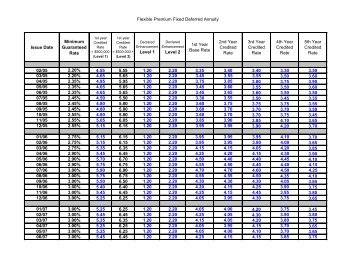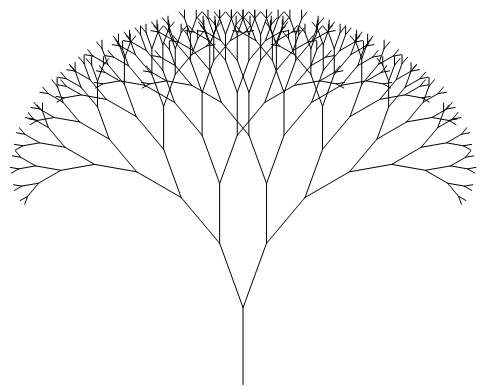Contents:
People who want to reduce their alcohol consumption often do not realize how much of their social and daily routines alcohol has become. Tapering alcohol may be uncomfortable, and there may be subconscious triggers that stimulate the desire to drink alcohol. Stress is a common trigger that makes it hard to modify your alcohol intake. Finding a different, more healthy way to unload stress may go a long way in helping someone succeed in cutting back on their alcohol use.
Alcoholism treatment allows you to detox in a safe environment. It teaches you healthy ways to cope with stress and techniques for overcoming the underlying causes of alcohol addiction. If your body is used to a certain amount of alcohol, https://rehabliving.net/ you may feel certain effects when you stop. How you feel when you stop drinking is largely based on how often and how heavily you drink. People who only drink occasionally probably won’t notice any physical or psychological symptoms.
- Tapering off alcohol is a reasonable strategy for anyone who desires to stop drinking.
- Someone who has gone through alcohol withdrawal several times is more likely to experience severe withdrawal symptoms than someone going through it for the first time.
- Your brain eventually stops producing certain chemicals that it receives from alcohol, becoming dependent on the drug.
- Severe or major alcohol withdrawal aka Delirium Tremens (D.T.s). This usually occurs more than 48 hours after a cessation or decrease in alcohol consumption.
Another report from Good RX claims that 23% of caffeine consumersdesire to cut down their intake, while 26% experience withdrawal symptoms when doing so. While less severe than other things, like alcohol or tobacco addiction, there’s no doubt that caffeine is one of most significant and widespread chemical dependencies of the modern era. Substituting a prescription drug for alcohol should only happen with the help of a medical professional.
As a rule of thumb, HAMS suggests reducing your consumption by two standard drinks per day until you reach zero. For example, if you typically have 10 drinks per day, you could cut back to 8 the first day, then 6, 4, 2, and finally none. If you have 20 or more drinks per day, they suggest one drink per hour the first day, every hour and a half the next, then reducing by 2 drinks per day after that.
What Does “Tapering Off Alcohol” Mean?
It can also involve substituting the drink of choice with another drink; for example, a person may taper off hard alcohol with beer. Although it may seem like the best way to stop alcohol use is to stop drinking right away, this is not the case. Quitting cold turkey can sober house boston shock your system since it has become used to functioning with alcohol. Aside from unavoidable triggers, tapering off alcohol can also have side effects which can be difficult to manage at home. There is also the matter of the specific type of alcohol in question.
When untreated about one person in five will die of D.T.s. Some people refer to shakes as D.T.s but this is inaccurate. The Monument platform can help determine what timeline will work for you based on your past drinking habits and risk of withdrawal. Whatever schedule is chosen, it’s important to commit so you can build upon your progress and avoid withdrawal symptoms as much as possible. The Journal of Caffeine Research reports that, in one study, 35% of participantsmet the criteria for caffeine dependence.
Some people may, however take longer–three days or even a week. If you start to feel withdrawal that is a sign that your taper is not done yet.It is also very important when tapering off to fight dehydration and to replenish lost vitamins. If you go through a medical detox the people they may rehydrate you with an IV and may also give you vitamin shots. If you are doing a self detox be sure to drink lots and lots of fluids and to take vitamin pills. We recommend Gatorade because it has balanced electrolytes. If you choose to drink water make sure that you get enough salt for electrolyte balance so that you avoid water intoxication.
A direct taper means you continue to drink your regular drinks but slowly decrease the amount over time. Direct tapers are better if you prefer drinks that contain a low percentage of alcohol. There are two ways to taper off alcohol—a direct or substitution taper. The success of these strategies will depend on how much you drink and what you drink. If you have a severe level of addiction or dependency, you may need a detox program. Talk to a medical professional to find the best detox option for you.

When that numbing sensation disappears entirely, the brain is left dangerously overstimulated. Insomnia, anxiety and paranoia — the opposite effects of alcohol — are the expected results. Thus, a user will likely seek out alcohol again to rid themselves of the uncomfortable withdrawal symptoms. The amount of alcohol it takes to cause withdrawal symptoms can vary from person to person.
Can Tapering or Weaning off Alcohol Reduce Withdrawal Symptoms?
If you think you’re tapering too quickly, it’s okay to slow down. Just because you had 8 drinks instead of 6 one day doesn’t mean you’ve failed, especially if you still drank the same or less than the previous day. Maybe you just need to set more realistic goals for yourself and slow your taper.
However, when these activities include alcohol, it can be a dangerous mix. Alcohol also inhibits the glutamate receptor–which is the cause of staggering, slurring, and general interference with muscular coordination. Glutamate receptor rebound also appears to contribute to the withdrawal symptoms described above. Half of all Americans have high blood pressure, also known as hypertension, and many don’t even know they have it.
Medications can also help keep a person’s body chemicals in balance, lowering the risk for serious complications. In rehab, a medical professional will administer the medication and monitor its effects. If the medication begins to cause unwanted side effects or interferes with the detox process, another remedy can be used. When you slowly taper your alcohol intake over time instead of quitting cold turkey, you reduce the likelihood of withdrawal symptoms. By weaning yourself from drinking, you give your brain the chance to adjust the amount of GABA it produces. When coming off drugs or alcohol tapering is the best way to prevent severe withdrawal symptoms.
Consider professional support
Metabolic enzymes, antioxidants, and various hormones, depleted during training, return to their optimal ranges. And, the body’s immune system improves dramatically too. In short, tapering allows your body to prepare for peak performance. One study concluded, “The primary aim of the taper should be to minimize accumulated fatigue, rather than to attain additional physiological adaptations or fitness gains.” Reach out to a treatment provider for free today for immediate assistance. 5 Risks When Drinking Alcohol In The Summer SunSummer is a wonderful time to go outside and enjoy outdoor activities.

As a result, little information is available regarding the best way to taper. That said, some independent groups have stepped in, publishing sample tapering schedules to guide people who are trying to cut back on drinking. It can take different people varying amounts of time to taper off alcohol. How long it takes depends on factors like how much you typically drink. A person who drinks more alcohol will probably have a longer taper than a person who drinks less alcohol. Licensed medical professionals review material we publish on our site.
They are support groups for people who care about someone with an addiction. Al-Anon is for adults who have a loved one with an addiction. Alateen is for teens who have a parent or caregiver with an addiction. Drink a lot of water during your taper to help rid your body of toxins and reduce headaches.
Once you’ve changed to a less alcoholic option, you can gradually reduce your drink amount. Tapering can be an excellent way to prevent harmful withdrawal effects after ceasing alcohol intake. You can taper off alcohol if you worry that you are developing alcohol addiction. The chance of experiencing severe withdrawal symptoms increases if you’ve had them before, or if you’re older. These schedules are largely based on my experience of self tapering, what I’ve read on r/dryalcoholics and HAMS Harm Reduction Guide to Tapering. You may need to do a slower taper than someone else who was drinking the same amount as you.
How Do You Safely Taper Off Alcohol?
Support groups such as Alcoholics Anonymous or sober living houses can help you get connected with peers who are going through the same journey as you are. A final strategy to assist with an alcohol taper is to get a good network of peer support. Overstimulation in your nervous system can affect important unconscious functions like your heart rate, blood pressure, and electrical impulses.
Questions About Treatment?
It can help to make use of standard drink measurements, as mentioned above. Then come up with a reduction rate you think will be safe, and that you can stick to. Holding a nonalcoholic drink can keep you occupied and make it easier to delay the next serving of alcohol.
This will help you figure out a baseline to start your taper. If any of the above warning signs happen, drink alcohol immediately and seek medical attention if the feeling doesn’t stop. Severe Shakes – If your hands are shaking so much you practically can’t hold an object in your hand, can’t use your phone, can’t write a sentence.
Hallucinations and panic attacks are common during this time as your body rids alcohol from its system. As you approach the end of the first 24 hours of detox, symptoms eco sober house complaints may become increasingly severe. Alongside the effects felt from the first 12 hours, additional symptoms may involve disorientation, hand tremors and seizures.











